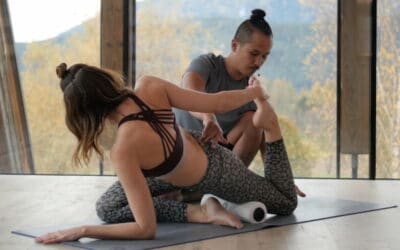One of the most delicate aspects of teaching yoga is physically assisting your students by giving them hands-on yoga adjustments. Guiding your students verbally is one thing, but to actually put your hands on their bodies is a totally different thing.
Physical touch is a direct and very intimate form of communicating with your students. Intelligent and thoughtful hands-on assists can transform a student’s yoga practice. But inappropriate and improper adjustments can lead to confusion or even injury of your students.
What is more, yoga adjustment is an area that bears a high risk of misunderstandings. This is especially true because you usually don’t receive direct and honest feedback from your students. Therefore, every yoga teacher needs to know how to communicate in a professional and unambiguous way when touching students in order to avoid unnecessary misunderstandings.
Note that, while it is also possible to assist your students with verbal yoga adjustments or teach them how to apply self-adjustments in their own yoga practice, we want to focus on hands-on yoga assists here.
Let’s look at the following aspects:
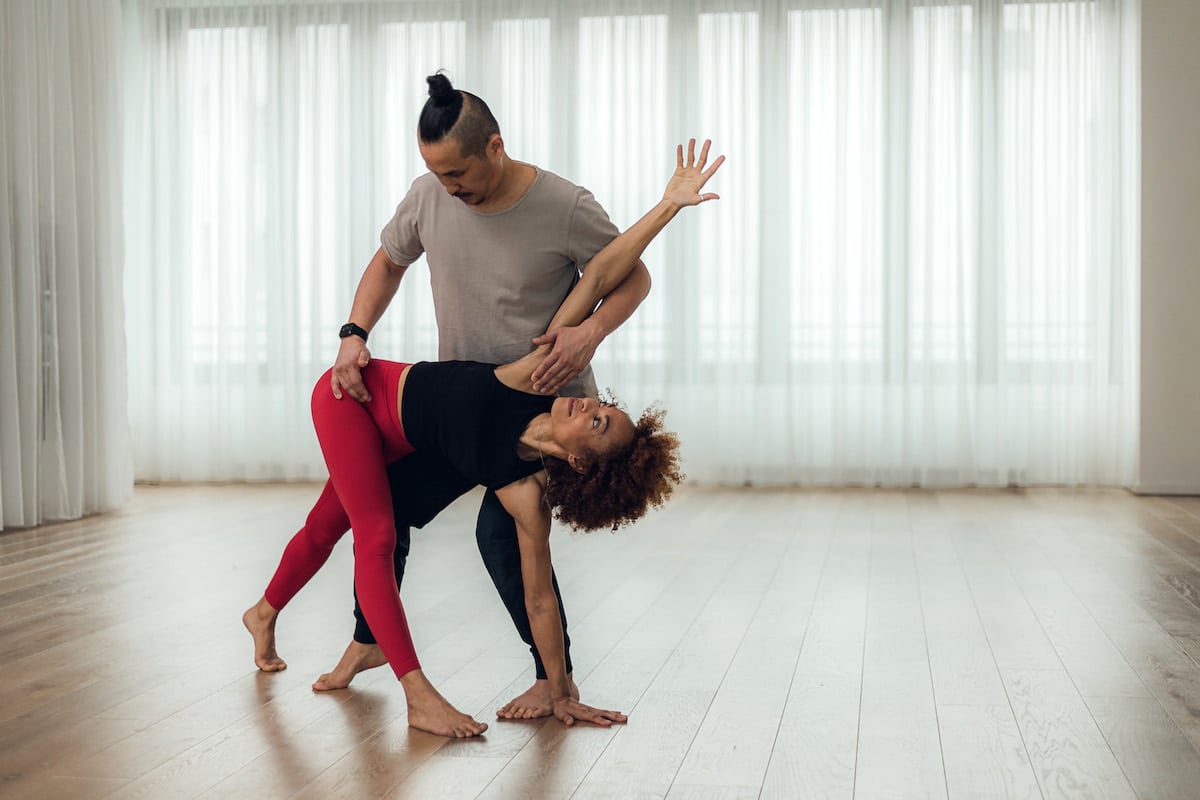
If you want to survive as a teacher on the yoga market, you need to master yoga adjustments.Photo: TINT Instructor Young Ho Kim.
1. Why Yoga Teachers Touch Their Students
1.1. The Importance of Touch in Yoga
In most situations of our lives, it’s inappropriate to place your hands on people – especially if you don’t know them very well (because they share a bed with you, for example). Well, a yoga studio is the one place where this kind of intimate practice is acceptable.
A skillful yoga teacher can communicate with their students by transferring information through the touch of their hands. In this case, it’s especially important to make sure that a student knows that being touched is an integral part of the yoga practice and that certain corrections are necessary to avoid injuries.
The main reason for touching students in a yoga class is to help their alignment. However, you will inevitably also connect to your students and come closer emotionally. This entails a lot of responsibility because touching people with your hands is a very intimate action.
While some students may not mind hands-on assists, others don’t want to be touched at all as this may feel intrusive. Therefore, a yoga teacher always needs to be careful when and how to touch people and consider the right time and place to perform hands-on adjustments.
When you, as a yoga teacher, know how to apply touch, this is a great tool to bond with your students, especially in a society that becomes more and more distant. Thousands of friends on social media cannot replace the unique and bonding experience of physical contact that creates a feeling of community and belonging. Humans are social beings and not made for being alone. Just think of kids who crave hugs and cuddles.
However, as a yoga teacher, you need to remember that you don’t want to create a community based on misunderstandings, for example, because your touch is too intimate. After all, yoga is a physical practice that also reaches your students’ minds and emotions. This is a combination that makes it very easy for students to misunderstand your intentions. You may unintentionally create an environment where it’s easy to fall in love. This makes physical touch an even more delicate thing as it can create real misunderstandings.
Traditionally in yoga, the relationship between master and disciple was quite different from what it is nowadays. It used to be a much closer relationship but was often characterized by an imbalance of power. The tactile stimuli used by the teacher were rougher and it was not unusual to enter the disciple’s privacy in a quite intimate way. Hence, traditional yoga adjustments often are more forceful and sometimes even touch areas which we will exclude below.
However, in our modern society, we don’t have this kind of relationship with our students. Plus, social norms and habits have changed, as described above, and an imbalance of power between yoga teacher and student is simply not acceptable.
Therefore, a yoga teacher must know exactly how to touch students. While you want to create an environment where people open up, you don’t want to create misunderstandings.
Although your intention may be pure, the most important thing is what your students understand and feel. As a yoga teacher, you carry the huge responsibility of bonding with your students without crossing the line.
If you want to become a yoga teacher yourself and learn skillful yoga adjustments, join our 200-Hour Online Yoga Teacher Training.
1.2. Reasons to Adjust Students in a Yoga Class
Every yoga student prefers a different way of learning. A great yoga teacher can identify these different learning methods and structure their teaching practices accordingly. While some students can apply the correct yoga alignment by listening to verbal instructions only, others need to actually feel the alignment by being adjusted physically.
The fact is, if you want to survive as a yoga teacher, you need to master adjustments. This is what really creates an added value to an in-person class in comparison to an online class. Of course, you can provide great alignment, instructions, and cues online, but you cannot provide hands-on assists to your students. This is why you need to master the skill of yoga adjustment to survive in the yoga market.
Here are some of the main reasons why hands-on assists in yoga are so important.
1.2.1. Posture Guiding & Alignment Correction
Sometimes, a student really struggles to safely get into a certain yoga pose and, thus, risks getting injured. In other instances, a student may have the right idea of the yoga pose but struggles with the correct alignment. This also bears the risk of serious injury and, thus requires the yoga teacher to intervene and support the student with a hands-on adjustment.
One common misalignment, for example, is the front knee falling in in Warrior I and Warrior II. This is not a problem if it happens once, but can damage the knee in the long term if not corrected by a yoga teacher. In such cases, hands-on adjustments can be used to safely guide a student into the correct posture.
1.2.2. Going Deeper & Muscle-Memory Instructions
When a student has managed to correctly get into the pose with the right alignment, they may not (yet) be able to move into the pose deeply enough to experience all its benefits. A skillful yoga teacher should be able to help their students when it comes to these poses by providing physical assistance.
Apart from that, experienced yoga teachers may even be able to tell whether their student is feeling which benefits they are supposed to feel in a certain pose. If not, hands-on adjustments can be used to show students what the benefits of a certain pose should feel like.
This means that hands-on assists can train the students’ body intelligence and help them to fully perform the pose next time they practice it. This way, intelligent physical adjustments allow students to get the most out of their future classes.
And this is the point where you as a yoga teacher can really make a difference and create a long-term effect and sustainable change in your students.
1.2.3. Breathing Assistance
It may sound a bit weird that a person could require help with their breathing. However, it’s a fact that the correct breathing technique can tremendously increase the benefits of a yoga practice. In these scenarios, you can help your students to identify the right breathing points by providing hands-on adjustments. This is a great way to enable your students to get the most out of your yoga class.
“Adjustment always is an extension of alignment.”
1.2.4. Summary: When to Adjust
In general, you need to remember that adjustment always is an extension of alignment. As we’ve already seen above, touching people is a delicate topic. Therefore, you always need to make sure that any hands-on assist you give a student makes perfect sense.
Ask yourself the following questions before touching any of your students in a yoga pose:
- Is this yoga adjustment beneficial for the student, or am I just exerting power?
- Does this student really need a hands-on yoga assist or do I just want to show off?
- Am I calm and steady while I adjust this student, or am I restless and in a rush?
- Am I 100 percent focused on this student, or am I thinking of something else?
- Am I properly trained to carry out this hands-on assist in a safe, healthy and efficient manner?
- Do I know what I’m doing, i.e. am I sure not to hurt my student?
If you fail to answer one of these questions with certainty, don’t provide a hands-on adjustment.
In Barbra Noh‘s Academy Training The Art of Teaching, you learn how to become a skillful yoga teacher.
2. Inappropriate Yoga Adjustments
Apart from your own uncertainty or lack of experience when it comes to hands-on assists, there are other instances or reasons why it may not be appropriate to touch your students.
In particular, there are certain areas of the body that you should NOT touch when providing adjustments in yoga. These include:
- the sexual organs;
- the breasts and the chest area;
- the insides of the thighs;
- the buttocks and tailbone;
- the armpits;
- the belly area;
- the head including crown of the head, face and chin; and
- individual personal sensitive spots (e.g. feet).
Apart from knowing where to touch your students, you also need to know how to touch. Although a good intention is a good start, it is not enough. The correct technique is equally important.
If, for example, the student you’re approaching to provide a hands-on adjustment shows any level of unwillingness or rejection, it’s important to respect their wishes. This is because you can never know the students’ entire story. You don’t know what they may have experienced in the past and why they’re so reluctant to physical touch.
Any adjustment should be carried out in a way that counteracts compression. This takes the pressure off the joints and allows students to deepen their breath.
Also, your students should feel an immediate change in their alignment as a result of your adjustment. Otherwise, why adjust at all?
This means that you need to make sure you have a thorough understanding of both the pose’s alignment and adjustment before giving any hands-on assists. This involves having received the adjustment yourself and having practiced it on other persons like teachers, friends, and your students (ranging from your “best” students to newer students and even injured students).
Once you have worked through the challenges of a yoga pose, you’ll be better equipped to help someone else with exactly these challenges. Always practice with real people as this gives you the best feedback regarding how to touch, how to move, and how your student reacts.
Needless to say that you also must have a sound understanding of your students’ limitations and/or injuries before touching them in any pose.
Finally, avoid touching too much and too many different areas because this is too much information for the brain to process. This is especially true for yoga beginners. Do not overly adjust them as they may get discouraged if they think that they’re doing all the poses incorrectly. In addition, you’re still forming a relationship and establishing trust with new students.
On the other hand, it’s particularly important to adjust beginners if you see that they’re at risk of harming themselves or if you feel you can help them find more ease in a pose. Beginners tend to think that yoga has to hurt and, thus, will not notice right away when they’re not correctly aligned.
While there are general guidelines that should be considered when it comes to hands-on assists, it’s important to remember that each and every student is different. This means that the application of these guidelines can differ significantly from student to student. Accordingly, yoga adjustments must be carried out on the basis of the individual physical requirements of each student.
3. Types of Hands-On Yoga Assists
Basically, there are two types of yoga adjustments: good and bad adjustments. Jokes apart. In general, we can distinguish between static and dynamic adjustments. Static adjustments can be further divided into passive, active, and prana adjustments. Let’s look at these different categories in more detail.
3.1. Static adjustments
3.1.1. Active Adjustments
Active adjustments mean that the teacher provides tactile stimuli as an impulse to the student to activate their muscles in a particular way. The student’s muscles react to the teacher’s physical contact and, as a result, they are able to align their body in an anatomically correct way.
This method enables students to learn how their body works and how to perform the pose correctly next time. They learn what is important and what they need to do in a particular pose. This trains their body intelligence and they have a high learning curve.
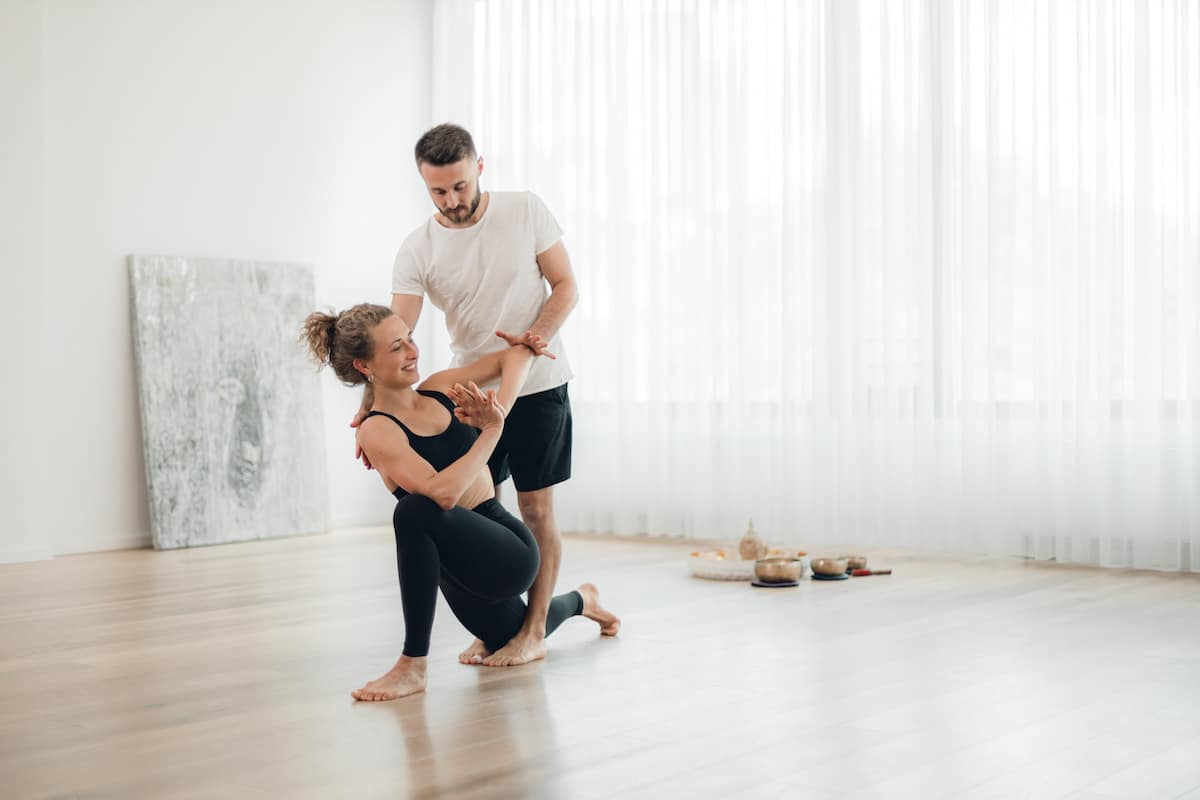
Active yoga adjustments train the student’s body intelligence. Photo: TINT Instructor Alexey Gaevskij.
3.1.2. Passive Adjustments
This is the more conventional way of adjusting and can be very beneficial for students when the yoga teacher has sound knowledge of anatomy.
The teacher applies an action on the student’s body, which reacts to this stimulus and aligns itself correctly. The force exerted on the student’s body should always work to counteract compression in a particular area of the body. In most of these techniques, the teacher’s body weight is the source of this force.
Since this technique involves the manipulation of joints and muscles, there’s a high risk of injuries if the adjustment is not done mindfully. Therefore, passive hands-on assists should be carried out with care.
Since the teacher’s action or force brings the student into the correct position and/or into a deeper and more intense version of the asana, the student doesn’t actively contribute but rather stays passive. Consequently, the learning curve is not as high as in the case of an active adjustment.
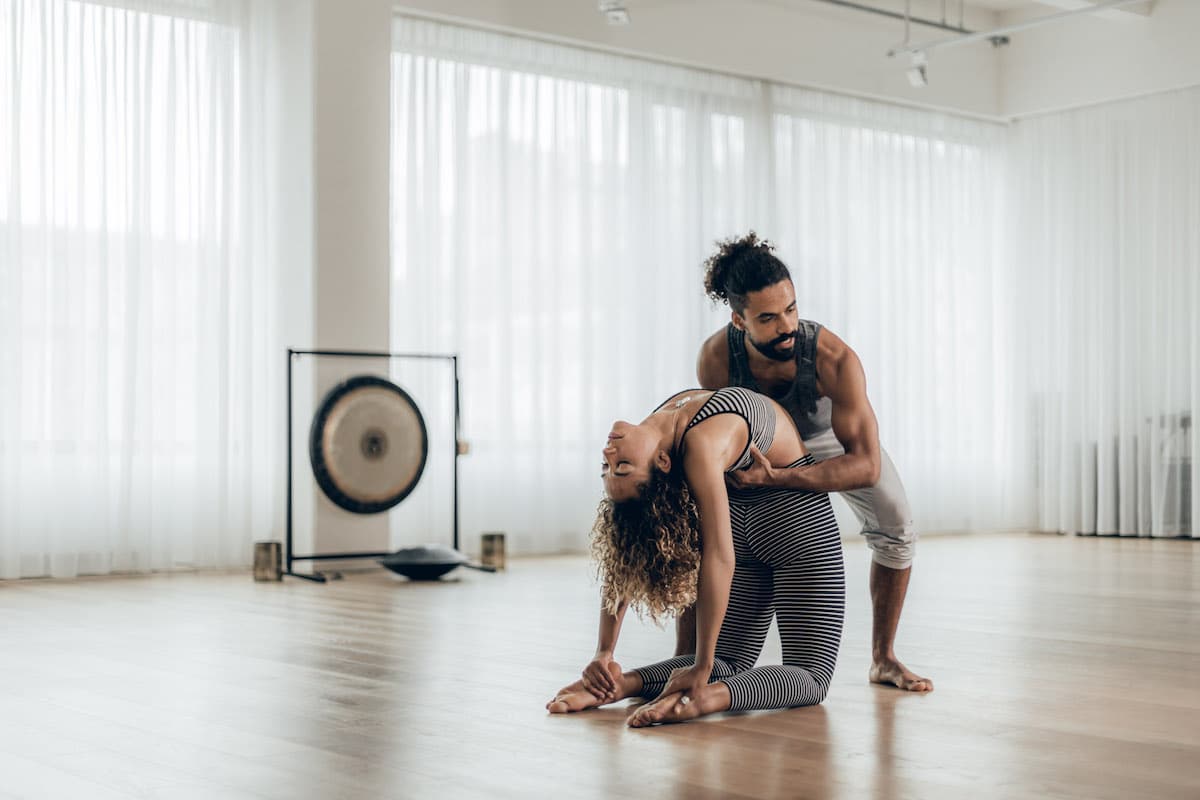
In a passive hands-on assists, the teacher brings the student into the correct position. Photo: TINT Instructor Mathieu Boldron.
3.1.3. Prana Adjustments
Prana is the life force that flows with the breath. Prana adjustment means adjusting the internal alignment of the breath to correct the physical position of the body from the inside out.
The intention is to shift the pressure within the body by activating the diaphragm and transversus abdominis in order to counter compression in the joints and, ultimately, to ease pain. To create more space, the teacher can use tactile stimuli on certain parts of the body that may otherwise be compressed in the asana.
This makes prana adjustment a simple yet very effective way of adjusting the body. Furthermore, it helps to calm the mind and to bring the student back into the present moment.
In general, as a yoga teacher, you position yourself beside the student and place one hand on that area of the student’s body that needs to be adjusted. You then instruct the student to “breathe into this part of the body”.
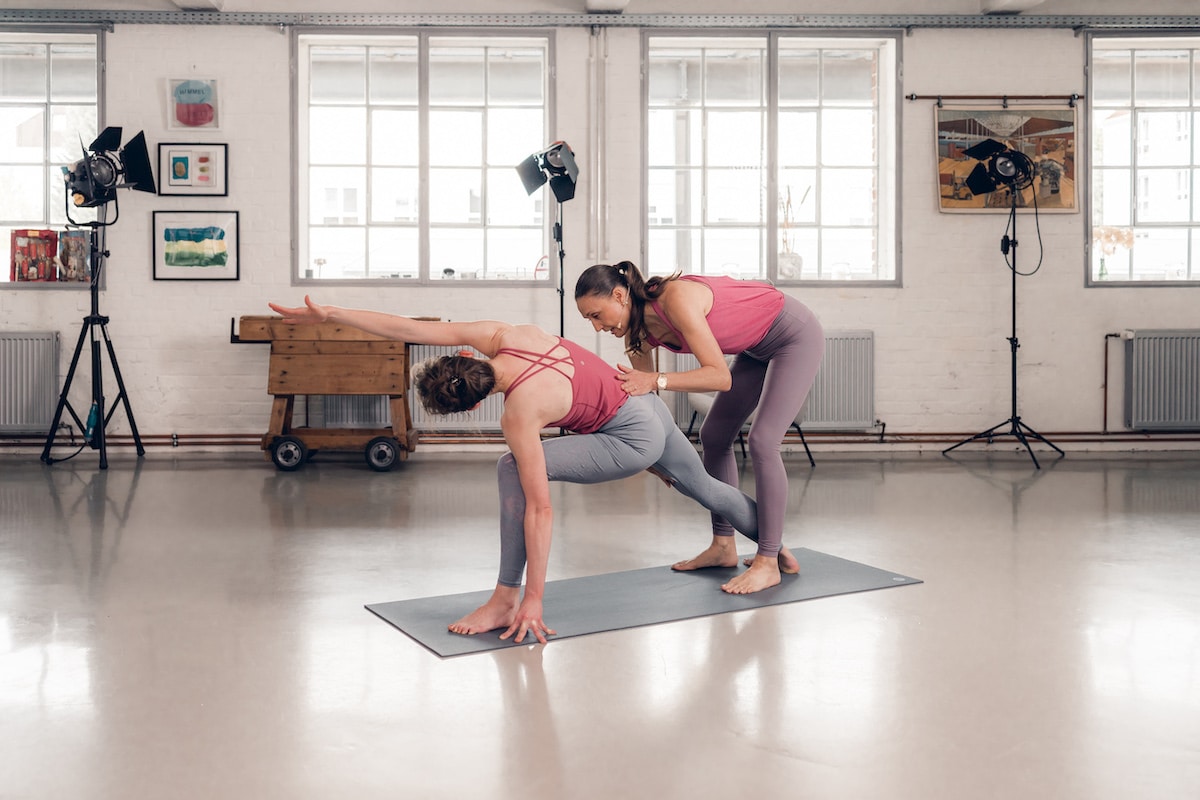
Prana adjustments use the student’s breath to align the body from inside out. Photo: TINT Instructor Barbra Noh.
3.2. Dynamic adjustments
Dynamic adjustments especially play a role in yoga styles with a lot of movement and changes in direction such as Vinyasa or Inside Flow. Here, your task as a yoga teacher is to support and correct your students during the transitions between the asanas of the sequence.
This means that you use touch to give your students a direction of movement and the navigation toward the next movement. Since you (should!) know which pose is coming next, you can start moving toward your adjustment a bit earlier than your student.
In a certain manner, a Vinyasa adjustment also is a form of Vinyasa flow. This means that you want to move just as steadily and smoothly as your students. Do not change your speed – neither between the adjustments nor during an adjustment. You don’t want to disturb the student’s flow but support it in the best possible way. Imagine you want to adjust like an ‘invisible angel’.
You can also take more time in individual transitions in order to adjust and explain more. Sometimes it is enough to only adjust one movement but hold the pose longer. In that case, inform your students early enough that they will need to stop in that pose.
You can also use the time between two songs to hold a pose longer and explain and/or adjust more in that particular pose.
And while you should be able to adjust every asana of your Vinyasa sequence, you don’t need to. Rather focus on providing hands-on assists in the key asanas, such as jumps, handstand, etc. In general, you don’t need to adjust simpler poses such as Mountain pose, Mini Warrior, Mini Wild Thing, etc.
You should also always make sure that you use solid touch and avoid unnecessary steps and movements on your part. Otherwise, you will disturb your students’ flow and they will get unsteady and nervous. If you feel uncertain and get nervous during adjustments, your students will also get nervous and will feel unsafe.
Remember: It’s all about what kind of energy you transmit to your students. They will pick up that same energy and embody it.
4. Conclusion On Yoga Adjustments: To Touch or Not to Touch?
The answer to the question of whether or not to provide hands-on yoga assists is just as individual as yoga itself. Everybody and every body is different. So, what works for one person or one body might not be appropriate for another.
For some students, hands-on adjustments from an experienced teacher are a great way for their body to understand proper alignment. Other students simply don’t want to be touched at all.
Keep in mind that providing hands-on assists does not necessarily make your yoga class better by itself. As a skilled yoga teacher, you should know how to instruct your students in the safest, healthiest, and most efficient manner – with or without touching them.
Never forget that touching people is a privilege. This means that, as soon as you come close to, and touch a yoga student in your role as a yoga teacher, you inevitably invade their personal space. The moment you enter this space, the situation automatically feels very intimate – for some students even like an invasion of privacy.
Therefore, yoga teachers need to be particularly sensitive when it comes to touching their students. Even if a hands-on assist is anatomically correct, it can feel emotionally incorrect. This means that you risk harming your student and abusing your power as a yoga teacher.
That being said, a yoga teacher who is able to provide intelligent and helpful hands-on adjustments can connect with their students on a much deeper level.
Maybe the most important thing to remember is that learning to physically adjust students in a safe, healthy, and efficient way takes time and practice. Even the most experienced yoga teachers (like our TINT Instructors) started by giving small hands-on assists to their students and gradually worked up to more complex adjustment methods.
With patience, persistence, and regular practice, you will be able to gain more confidence in adjusting your students and increase your adjustment skills over time.
And since we want to support you on this journey as your true partner and coach, we created a number of live classes with some of our highly skilled TINT Instructors that focus on different aspects of alignment.
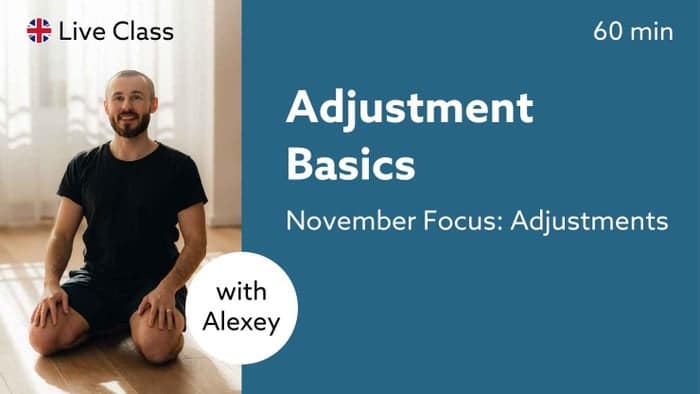
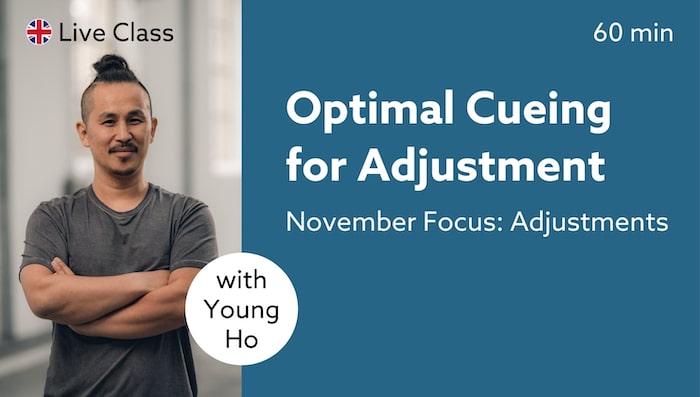
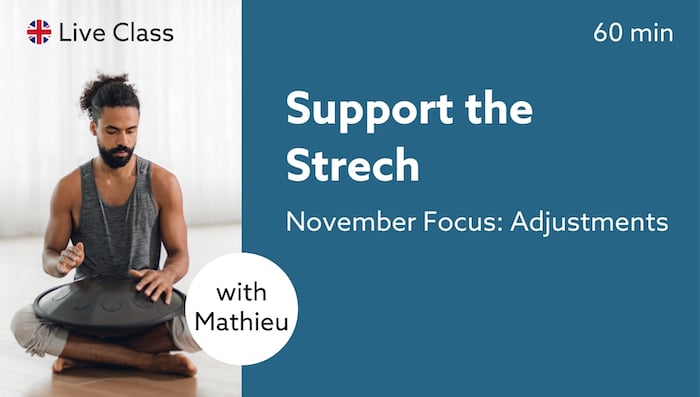
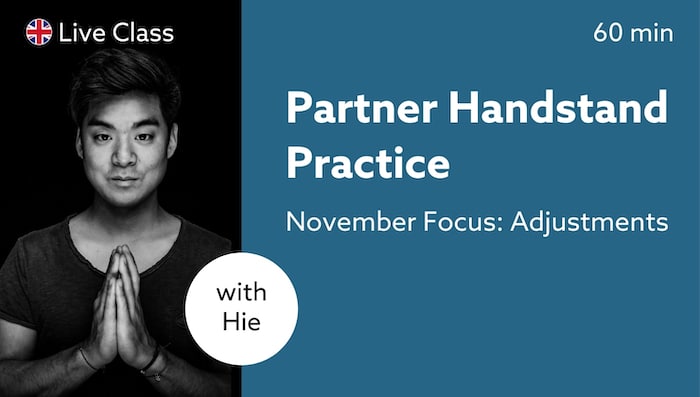
Our weekly live classes in November focus on adjustments.


